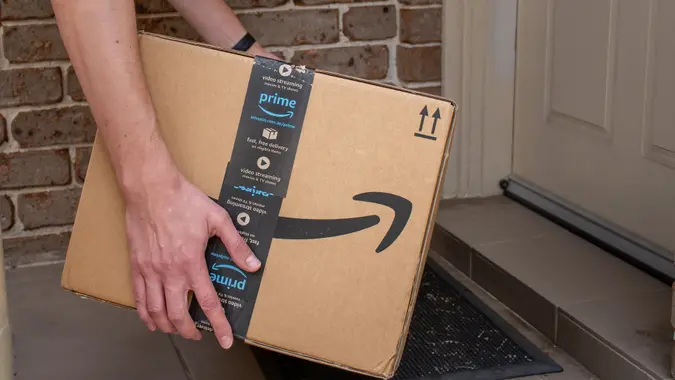9 Key Signs You Need To Adjust Your Budget in 2026

Commitment to Our Readers
GOBankingRates' editorial team is committed to bringing you unbiased reviews and information. We use data-driven methodologies to evaluate financial products and services - our reviews and ratings are not influenced by advertisers. You can read more about our editorial guidelines and our products and services review methodology.

20 Years
Helping You Live Richer

Reviewed
by Experts

Trusted by
Millions of Readers
Finances might feel tight now, and that is unlikely to change in 2026 with signs that inflation will remain high and new tariffs might increase costs once more.
According to Christopher Stroup, a CFP and founder of Silicon Beach Financial, be wary of any of the following signs — they may mean it’s time to adjust your budget, and thus your spending habits, in the new year.
1. Your Budget Hasn’t Caught Up With Rising Costs
If essentials like groceries, utilities or child care are taking a noticeably larger share of your paycheck, your budget may be outdated, Stroup suggested.
“Rising costs quietly erode savings potential, especially when inflation-adjusted expenses outpace income,” he said.
Regularly review fixed costs and adjust your budget to reflect 2026’s new price realities.
2. Inflation and Tariffs Outpace Income Growth
If your paycheck feels the same but covers less, that’s a warning, Stroup said. Inflation or new tariffs can shrink real purchasing power, even without a change in spending habits.
He recommended you track your month-to-month “leftover” cash, and if it’s consistently shrinking, your income has fallen behind the cost curve. Time to adjust your budget.
3. Fixed Expenses Are Crowding Out Flexibility
When more than 50% of take-home pay goes to rent, insurance and utilities, it’s time to reassess, Stroup warned. High fixed costs limit your ability to save, invest or weather volatility.
“The goal: Keep housing and essentials proportionate to income, ideally leaving at least 20% for savings and goals,” he said.
4. Lifestyle Creep Has Raised Your Baseline
It often starts subtly with a pricier gym, more takeout or upgrades that feel “earned,” Stroup said. “If discretionary spending rises faster than income, lifestyle creep is at play.”
Compare your current discretionary expenditures to last year’s — even a 5% to 10% shift signals a need to rebalance budget priorities.
5. You’re Relying on Credit or Savings Too Much
Rising credit balances or frequent savings withdrawals are clear pressure points that show your budget no longer fits your reality, Stroup noted.
“A sustainable plan shouldn’t rely on debt to cover basics or on emergency funds for recurring expenses. That imbalance demands a recalibration.”
6. You Haven’t Paid Attention to New Tax Rules
Under the One Big Beautiful Bill Act’s 2026 updates, changes to deductions, payroll thresholds or credit phaseouts could lower net income, especially for high earners and entrepreneurs, Stroup explained.
“Review projected after-tax income early to avoid midyear shortfalls and recalibrate estimated tax payments or withholding.”
7. Your Spending Ratios Are Out of Whack
A healthy rule of thumb for spending is to put 50% toward needs, 30% to wants and 20% to savings or debt repayment, Stroup noted. “If any category consistently exceeds its range, especially housing or discretionary spending, it’s time to realign. Small shifts here can restore long-term financial stability,” he said.
8. Financial Stress or Avoidance Is Creeping In
If you’re dodging bill reminders, feeling anxious about checking balances or arguing about money more often, your emotions are signaling imbalance, Stroup said.
“Financial stress often surfaces before numbers show trouble, which makes it important to acknowledge it early to reset habits and regain a sense of control.”
9. Small Recurring Costs Are Snowballing
If you’re not keeping up on your unused subscriptions, app renewals or daily splurges, these can quickly drain hundreds monthly all too easily. When “invisible” expenses multiply, they can distort your financial picture.
Stroup recommended a quarterly audit of automatic payments to cancel or consolidate anything that doesn’t add clear value.
You’ve Recognized the Gaps — Now Take One Clear Step
If you’re experiencing one or more of these signs, start by reviewing three months of bank statements and categorizing spending, Stroup said. Then identify one area to trim by between 5% and 10% and redirect that amount toward savings or debt reduction.
“Small, intentional moves create lasting improvement without disrupting your lifestyle,” he said.
 Written by
Written by  Edited by
Edited by 

























